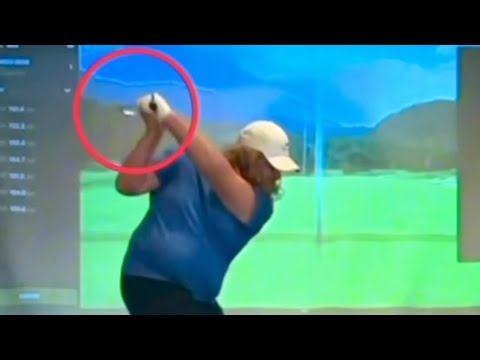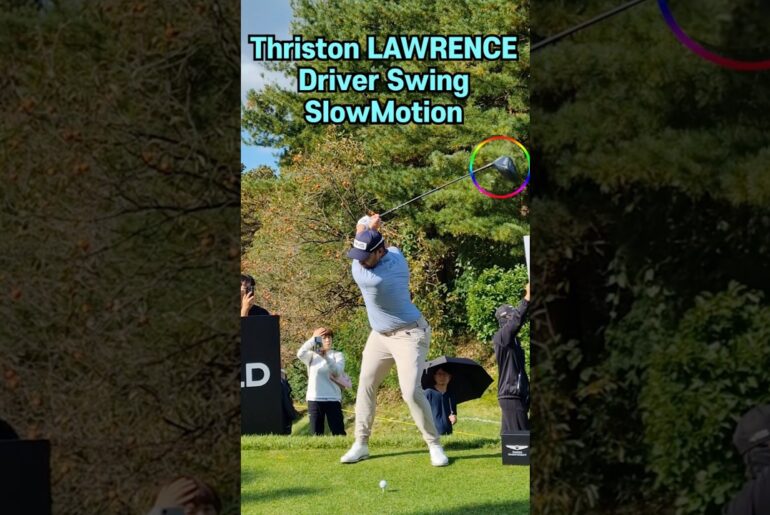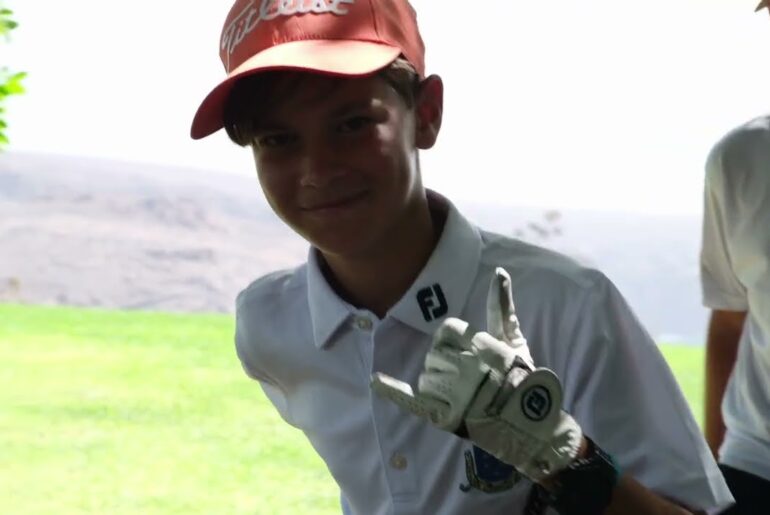A small part of an online lesson on the Snead app! 🔥
Andrew reached out to me inquiring about how his matchups are created, and specifically how he can retain his draw curve (non-negotiable for him) while learning to steepen his attack angle.
The main details highlighted in the video: his club alignment was creating an environment where the shaft wants to kick out in front of him too early in the downswing, which forced his chest to offset the steepness in order to swing from the inside and hit a draw.
While his compensations are effective in getting the ball flight he wants, it compromises the strike quality when the attack angle gets too shallow because of the amount of separation he created to get the club back into position. Low point too far back.
Our goal is to change the club alignment so that the shaft naturally pitches into a better spot, which in turn will allow his body to move differently while still being able to hit the draw he specifically wants to see.
**Some of you might say that he can keep his aggressive lateral shift in the downswing, but simply get the chest to stop tilting back (stack it over the pelvis), and while that would help his attack angle, he would still steepen the shaft in the downswing and be at risk of swinging much too far from the inside doing that, especially if he doesn’t improve his rotation.
In order to improve multiple areas of his pivot, and free him up to just rotate aggressively when playing, changing the backswing structure is the best long term approach for him.
Enjoy! ✌️
_________________________________
My name is Shauheen Nakhjavani, Co-founder of Nakhjavani Golf. I have been a golf coach for 10+ years, I’ve given over 25,000 lessons in-person & online, and I have worked with many professional players; including Kevin Chappell, Stephen Ames, Darren Clarke, Calum Hill, Yannik Paul, Eddie Pepperell, Jeremy Paul & many others!
If you want to learn more about my style of coaching, you can find more instruction here:
➡️ Instagram: https://instagram.com/shkeengolf
➡️ Instagram: https://instagram.com/nakhjavanigolf
➡️ Twitter: https://twitter.com/shkeengolf
🏌️♂️ SIGN UP FOR ONLINE GOLF LESSONS here: https://apps.apple.com/ca/app/snead-online-golf-coaching/id6452275983
When you start down, you can even see before we ever start down how this club is obviously way too laid off. Well, the shaft plane is going to start to steepen on you. It’s going to go essentially from a position that is more shallow at the top of the back swing to one that will likely start to get steeper and steeper as we come down into the ball. Now, you’re going to tell me, “Well, how do I draw the ball doing that? And how do I swing from the inside?” If theoretically the shaft is steepening from here and really the way in which you have started to draw the ball from the shaft angle actually getting steeper and steeper right until about this point is your body is now compensating for the poor club movement. So you have a shaft that gets out of position at the top. You have a shaft that steepens in transition. By all accounts here, if you were to simply just try to rotate and be aggressive through the ball with your body, you would swing very outside in because of the nature of how the club moves, right? You would actually hit down on the ball more, but you would your path would get too far left. Now, number one, you’ll never commit to that because you want to draw the ball as a non-negotiable. So, even if you tried to commit to that, you would see a ball flight that you don’t like anyways, and that wouldn’t work. but also you would likely hit a lot of pulls and pull draws because of how strong the club face is combined with how the shaft steepens at the start of your down swing. And so the way in which you have learned to develop a draw and compensate for the club movement, your chest starts to stay closed off and tilt back a lot. Now, the more we tilt back in order to play the draw, but also in order to shallow the club and prevent it from continuing to steepen, what does that compensation from the body do to the attack angle? It moves it further back. So, while you do get the path to the right, your attack angle gets compromised in the process. And because your body is stalling out to compensate for the poor club movement, you cannot keep rotating your body. The hands now flip down the target line and the exit pattern gets very upright and very vertical. It’s obviously not that you want to be doing these things, but that your body is reacting to the poor club movement because of where the shaft was aligned at the top of the back swing and the chain reaction of events led you here. And that’s why you’re not only inconsistent, but why you tend to get too shallow into the golf ball. the chain reaction of events that takes place where your body compensates for it, right, is where you’re going to start to tilt back with the chest and create a lot of separation from your upper and lower bodies. And unfortunately, because you want to draw the ball, but also because you want to keep the path somewhat in check, the way in which you have developed that pattern, right, is by sliding and separating. So by the time we come down into this golf ball and we are at shaft parallel coming down, the center of your pelvis gets way out here and the center of your chest gets way back there. And so you are creating way too much separation and your upper body is starting to tilt back. You typically will see a big discrepancy in the shoulder tilt where the lead side gets too high. All of these things are happening because your body is trying to compensate for a poor club movement. So, if we want to fix the pattern, the starting point of fixing the pattern really is where the shaft gets aligned at the top of the back swing. Now, obviously, it’s not as simple as just cleaning that up because if we do fix the shaft alignment at the top and your body still does these things, you’re going to swing even further from inside and be even shallower into the ball. So, every change is going to need a secondary adjustment. So, as we get the club alignment better, the club will start to get shallow more organically. It’s going to reroute onto a better plane. We won’t need to create as much slide and separation. And so we’ll be able to attack the pivot at the same time.








1 Comment
I'm a good match up with this guy.